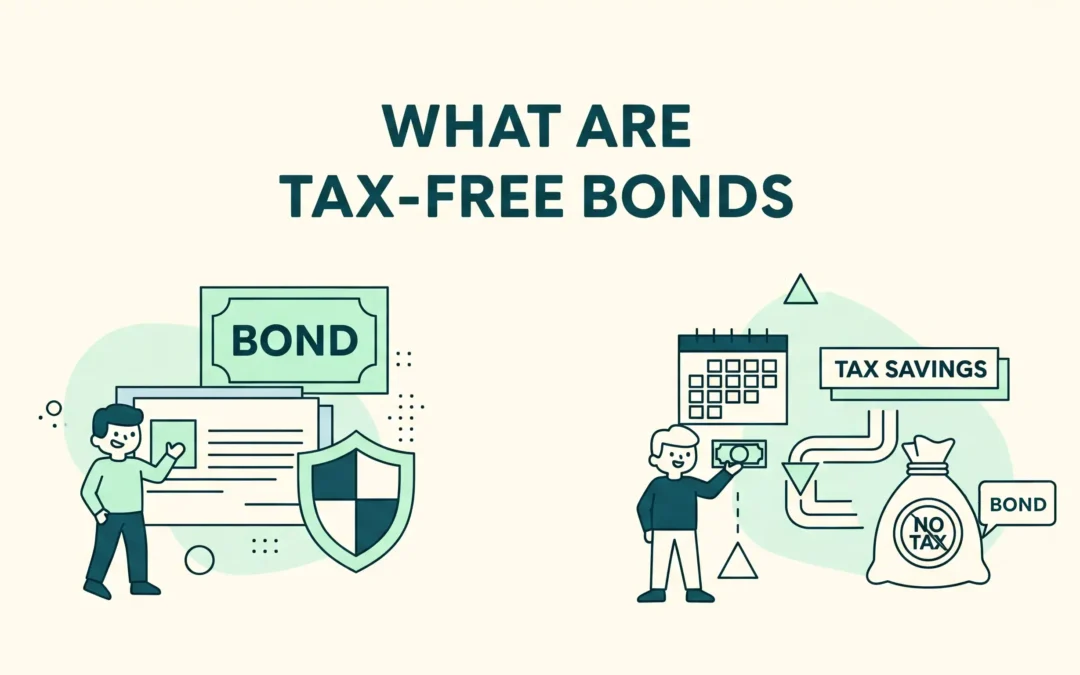Investing your hard-earned money should be done only after research. People often ignore the tax obligation attached to an investment option while conducting their research. Tax-free bonds are one such option that does not charge any tax on the returns generated. They are government-backed and are generally considered safe.
No matter how profitable a deal may sound if the tax is higher, then the net returns automatically reduce. This article will help you understand tax-free bonds and whether it is a suitable option or not.
Understanding Tax-Free Bonds
Government-backed companies like NHAI, REC, PFC, IRFC, and others issue tax-free bonds, which are long-term debt instruments. As the name suggests, the returns earned on them are not taxed.
Key Features:
- Issuer: Your money is in good, safe hands because these bonds are issued by Public Sector Undertakings (PSUs), which are supported by the government.
- Tenure: They are ideal for people who want to safely store their money for the future because they are made for long-term peace of mind and typically have maturities of 10, 15, or even 20 years.
- Interest Rate: It is simpler to plan your finances when you receive a fixed and predictable annual return, usually in the range of 5.5% to 6.5%.
- Credit Rating: With a top-tier AAA rating, the majority of tax-free bonds provide you with excellent safety and virtually no default risk.
- Listing: You have the option to sell these bonds on the secondary market if you ever need to leave early because they are listed on significant stock exchanges like the NSE and BSE.
| Particulars | Details |
| Eligible Investors | Individuals, HUFs, NRIs, Trusts, Corporations |
| Tax on Interest | Nil |
| Lock-in Period | No formal lock-in; long maturity (10-20 years). Early exit is possible only via secondary market trading |
| Liquidity | Tradable, but low volume |
Pros and Cons of Investing in Tax-Free Bonds
Let us look at the pros and cons of tax-free bonds for a better understanding:
Pros:
- Tax-Free Interest: Since all interest income is tax-free, investors in the 30% or higher tax bracket gain a substantial advantage.
- Capital Safety: These bonds provide a high level of principal repayment assurance because they are backed by government PSUs.
- Stable Returns: Throughout the tenure, the fixed coupon rate stays constant, generating a steady yearly income.
- Low Risk: These bonds are appropriate for conservative investors due to their AAA ratings, which indicate that they carry a low default risk.
- Better Post-Tax Yield: For high-income earners, the net return frequently exceeds that of traditional fixed deposits after-tax adjustments.
Cons:
- Long Tenure: Investors’ money is committed for ten to twenty years.
- Low Liquidity: Although they can be sold on exchanges, exits may be challenging due to the low trading volumes.
- Lower Yield: Particularly in bull markets, the fixed income may appear less alluring
Who Should Invest in Tax-Free Bonds?
After understanding the downside of these bonds, you may be wondering whether you are the right individual for this option or not. Let us determine it:
Ideal for:
- Retirees: For retirees who value stability, these bonds provide a steady yearly income stream free from the volatility of market-linked investments.
- High-income earners: Because interest earned is entirely tax-free, investors in higher tax brackets gain a substantial amount.
- Conservative investors: People who value capital preservation will find peace of mind and principal security in these AAA-rated bonds.
- Those making long-term plans: Because of their 10- to 20-year tenure, tax-free bonds are a good fit for long-term financial goals.
Not Ideal For:
- Investors looking for short-term liquidity: These bonds might not be appropriate for investors who require flexible or immediate access to funds due to their lengthy lock-in periods and minimal secondary market activity.
- Those anticipating substantial capital growth or returns: Unlike stocks or mutual funds, tax-free bonds are fixed-income securities that do not have the potential for capital growth.
- People in lower tax brackets: The tax-free status provides little benefit to investors in the 5–20% tax range, comparatively.
| Factor | Best Suited For | Not Ideal For |
| Tax Bracket | 30% and above | 5% or 10% |
| Return Preference | Steady, tax-free interest | High capital growth |
| Risk Profile | Low-risk, safety-focused | Risk-takers, aggressive investors |
| Liquidity Need | Long-term commitment | Need for short-term access |
| Investment Goal | Retirement, education, and stable income | Quick gains or short-term goals |
Bottomline
The conclusion can be drawn that it is important to consider the tax factor also while deciding which option to choose for investment. The answer to the question of whether it is suitable or not for you depends on your profile. If you have short-term obligations, then this may not be the right option. However, people moving towards retirement or those who are conservative investors may prefer tax-free bonds as they ensure stable income over the long term.
Investors must decide their objective and then only commit to these long-term tax-free bonds.


